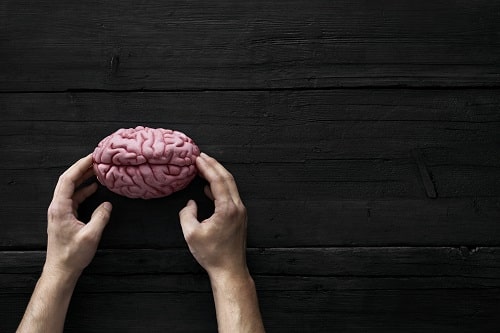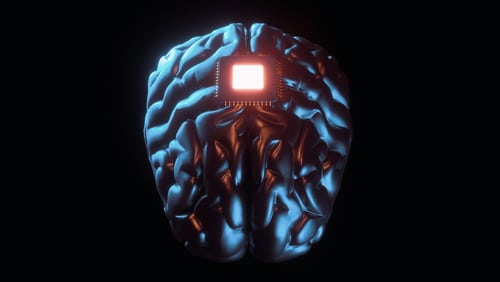Brain Awareness Week 2023, happening 13-19 March this year, is all about raising public awareness about the importance and benefits of brain research. It’s not only to push for continued funding for this type of research, but to teach people about what’s already been achieved.
The brain as a research area is invaluable for people living with disability. Whether it’s neurodegenerative diseases like Alzheimer’s or Multiple Sclerosis, partial or whole paralysis due to head trauma or stroke, epilepsy, or anxiety caused by mental illness – disease or damage to the brain is a huge component of what causes disability.
As a way to promote continued research, we’ve decided to cover what advances there have been in brain research in relation to some of the most prevalent brain issues humans live with. The science is very inspiring. In this article we cover neurodegenerative diseases, traumatic brain injury, and mental illness.
Table of contents

1. Neurodegenerative diseases
Neurodegenerative diseases cover a wide category of brain disorders that mainly affect the nerve cells in the brain and the spinal cord.
Some of the most common neurodegenerative diseases include Alzheimer’s disease, dementia, Parkinson’s disease, Huntington’s disease, Amyotrophic lateral sclerosis (ALS) – also known as Lou Gehrig’s disease – and Multiple sclerosis (MS).
Read more: What’s the Link Between Dementia and Alzheimer’s Disease?
According to the Australian Institute of Health and Welfare (AIHW), neurodegenerative diseases are the third leading cause of death in Australia after heart disease and cancer. As of 2021, experts estimate that dementia affects over 400,000 Australians, while around 80,000 Australians have Parkinson’s disease.
Thanks to continued funding and research, scientists keep making breakthroughs in understanding and treating these conditions. Here are promising advances to look into this Brain Awareness Week 2023:
Gene therapies
Scientists are exploring new treatments that target the genetic mutations that can cause neurodegenerative diseases. For example, the United States Food and Drug Administration greenlit a gene therapy called Zolgensma for spinal muscular atrophy (SMA).
Immunotherapy
This approach uses medications that target the immune system to reduce inflammation and protect neurons. It’s shown promise in treating conditions such as multiple sclerosis (MS) and Alzheimer’s disease.
Stem cell therapy
Involves the use of stem cells to replace damaged or lost neurons in the brain. Researchers are investigating its use for Parkinson’s disease and Alzheimer’s disease.
Deep brain stimulation (DBS)
Involves implanting electrodes in the brain that deliver electrical stimulation to specific regions. It’s been shown to improve symptoms in Parkinson’s disease.
Pharmacologicals
Several new medications have been developed that can slow the progress of neurodegenerative diseases or improve symptoms. Regulatory agencies have approved medications like acetylcholinesterase inhibitors and N-methyl-D-aspartate (NMDA) receptor antagonists for treating Alzheimer’s disease.

2. Brain injury
Traumatic brain injury (TBI) refers to damage to the brain from something like a blow to the head, a fall, a car accident, or other types of accidents.
AIHW reported in 2016-17 that there were over 33,000 hospitalisations for it in Australia. Brain injury can lead to everything from headaches, dizziness and memory loss to physical impairments such as weakness or paralysis.
Advances to research this Brain Awareness Week 2023
Here are some promising advances to learn more about:
- Advanced Imaging Techniques can provide in-depth information about brain function and structure that can better help diagnose brain injuries.
- Neuroprotective Agents. They can help reduce inflammation and oxidative stress in the brain, which can help reduce brain damage after a TBI.
- Therapeutic hypothermia to cool the body temperature to reduce the risk of brain damage after a TBI.
- The use of stem cells to replace damaged or lost neurons in the brain.
- Rehabilitation and neuromodulation therapies, such as transcranial magnetic stimulation and transcranial direct current stimulation can help promote brain plasticity and improve recovery after a TBI.
Neuralink brain chip
Although in its infancy, tech mogul Elon Musk’s Neuralink chip is thought to have the potential to one day cure paralysis and blindness. It’s a tiny implantable device that can be placed in the brain to communicate wirelessly with external devices.
It’s designed to read and write signals from the brain, which means it has the potential to restore the communication pathways that a brain injury may have damaged. This would enable people to regain control of their limbs.
It’s also designed to learn from the signals it receives from the brain. This means that it could adapt to someone’s unique needs and provide a more bespoke and effective solution of giving them back movement. It can also connect with devices such as computers, smartphones, or other types of medical devices. This means it could one day be used to control a robotic arm or other type of device that could help people with paralysis perform daily tasks.

3. Mental illness
Due to its debilitating nature and that no one can tell whether you have a mental illness just by looking at you, mental illness is an ‘invisible disability’. (Read more: How invisible disabilities affect mobility.)
And what a disability it is. Somewhat 17.8% of the population suffers from some form of mental disease, including anxiety, depression, bipolar disorder, obsessive compulsive disorder or addiction.
Due to the prevalence of mental illness, researchers are continuously looking into understanding, diagnosing and treating it more effectively. Researchers are exploring several promising research areas – be sure to look into these this Brain Awareness Week 2023:
- Advances in genomics and neuroimaging to develop personalised (and thus more effective) treatments. This makes it possible to give patients medicine tailored to their specific genetic and brain makeup.
- Gut-brain axis research. There’s growing evidence that microbes in our digestive tracts can affect the brain and mental health. This has led to the development of new treatments such as probiotics and faecal transplants.
- Digital therapeutics like smartphone apps and virtual reality. Advances in technology have resulted in the development of new, easily accessible forms of therapy that people can use remotely.
- Novel drug therapies. There are several new drugs in development, including medication that targets specific neurotransmitters and neuropeptides.
Another promising area of research is in our opinion one of the most exciting – the use of psychedelics as therapy.
Psychedelics to treat mental illness
Researchers are investigating the potential use of psychedelics, such as psilocybin (found in ‘magic mushrooms’) and LSD, as treatments for various mental illnesses. This would include depression, anxiety, and post-traumatic stress disorder (PTSD). Studies have shown that psychedelics can have a profound effect on the brain, particularly in areas related to mood, emotion, and perception.
Researchers are using one approach that involves administering the drugs in a controlled setting with the guidance of a trained therapist. This allows the person to explore their thoughts and feelings in a safe and supportive environment, which may lead to better results.
Recent studies have shown promising results in the use of psilocybin for the treatment of depression and anxiety, and MDMA for the treatment of PTSD. However, researchers are still in the early stages of studying these treatments. They will need to conduct more studies to determine how effective and safe they are.
Insure your independence this Brain Awareness Week 2023
Blue Badge Insurance is Australia’s first disability and independence insurance specialist. We started with the goal of positively discriminating for people with disability and now, years later, we have a range of insurance solutions to suit.
Blue Badge offers insurance cover for disability converted cars and mobility equipment, like wheelchair insurance. We also offer pet insurance for companion animals and Assistance Dogs insurance. It’s all about protecting the things that keep people living with disability as independent as possible, for as long as possible.
Contact us today to find out more.








